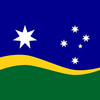AusGeoff
Gold Member
     Offline
Offline

Sage of Gippsland
Posts: 6025
Victoria
Gender: 
|
It's of interest to me that the alleged "first nations" people were so destructive
of the ecosystem of the continent—despite 21st century Aboriginals declaring
solemnly that they've always been "custodians" of the land, despite the purported
efforts of the invaders to destroy it. And that they're a caring, sensitive people
in tune with nature.
Not necessarily the case apparently.
Humans likely killed most of Australia’s native megafauna some 45,000 years ago,
a new study suggests. Animals including 450kg kangaroos, 2000kg wombats,
7m-long lizards, 180kg flightless birds, 130kg marsupial lions and car-sized tortoises
once roamed the Australian continent. Yet, shortly after the arrival of humans, more
than 85% of these animals went extinct, according to Dr Gifford Miller, a professor
at the University of Colorado Boulder, and co-author of the new study published in
'Nature Communications'.
Some scientists claim the animals died off due to climatic changes, when most of
the Australian landscape shifted to an arid environment.
A study found that the demise of the megafauna in southwest Australia took place
from 45,000 to 43,100 years ago and was not linked to major changes in climate,
vegetation or biomass burning but is consistent with extinction being driven by
"imperceptible overkill" by humans, said palaeoecologist Dr Sander van der Kaars
from the Monash School of Earth, Atmosphere and Environment.
But the final verdict is still elusive apparently.
The debate requires more field research on fossil sites, certainly ecological modelling
looks interesting, and proxies such as core samples of megafauna dung fall in this
category as well, but "against direct dates bracketing the age of fauna they don’t
amount to much", according to Michael Westaway, a Senior Research Fellow at Griffith University.
|

 Forum
Forum

 Home
Home 

 Album
Album 

 Help
Help

 Search
Search

 Recent
Recent 

 Rules
Rules 

 Login
Login

 Register
Register





 Pages:
Pages: 

